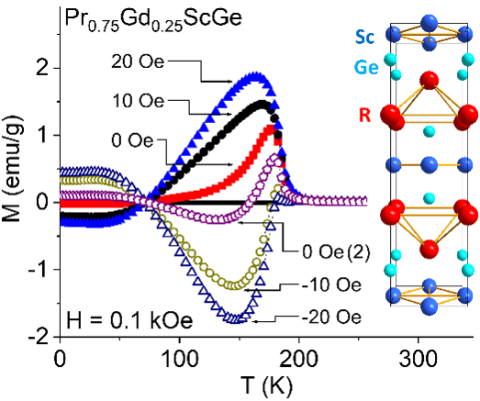Layered intermetallic compounds with rare-earth elements link science of three-dimensional structures with science of two-dimensional thin films and multilayers, by revealing intricacies of interactions within and between the layers. Further, physical behaviors and functionalities archetypical of multilayers can be realized in bulk. Especially promising are compounds where exchange interactions between layers of magnetic rare-earth atoms mediated by layers of nonmagnetic elements can be controlled by making use of rare earths with different spin and orbital magnetic moments. Hence, by replacing a quarter of Pr atoms with Gd, we synthesized a novel layered compound, Pr0.75Gd0.25ScGe, where large local magnetic moments of Pr and Gd and strong magnetic exchange interactions are preserved, but a magnetically-compensated state with zero net magnetization emerges. The unusual magnetism of Pr0.75Gd0.25 layers separated by layers of non-magnetic Sc and Ge in a periodic lattice leads to a remarkably large exchange bias and unique magnetic memory, where the material “remembers” prior exposure to magnetic fields even in orders of magnitude stronger opposing ones. This discovery guides our future research to fully understand and take advantage of the underlying physics to tailor novel functionalities with rare earths.

T. Del Rose, A.K. Pathak, Y. Mudryk, and V.K. Pecharsky, “Distinctive exchange bias and unusual memory effects in magnetically compensated Pr0.75Gd0.25ScGe,” J. Mater. Chem. C 9, 181–188 (2021). https://doi.org/10.1039/D0TC05087C. Published November 27, 2020.
